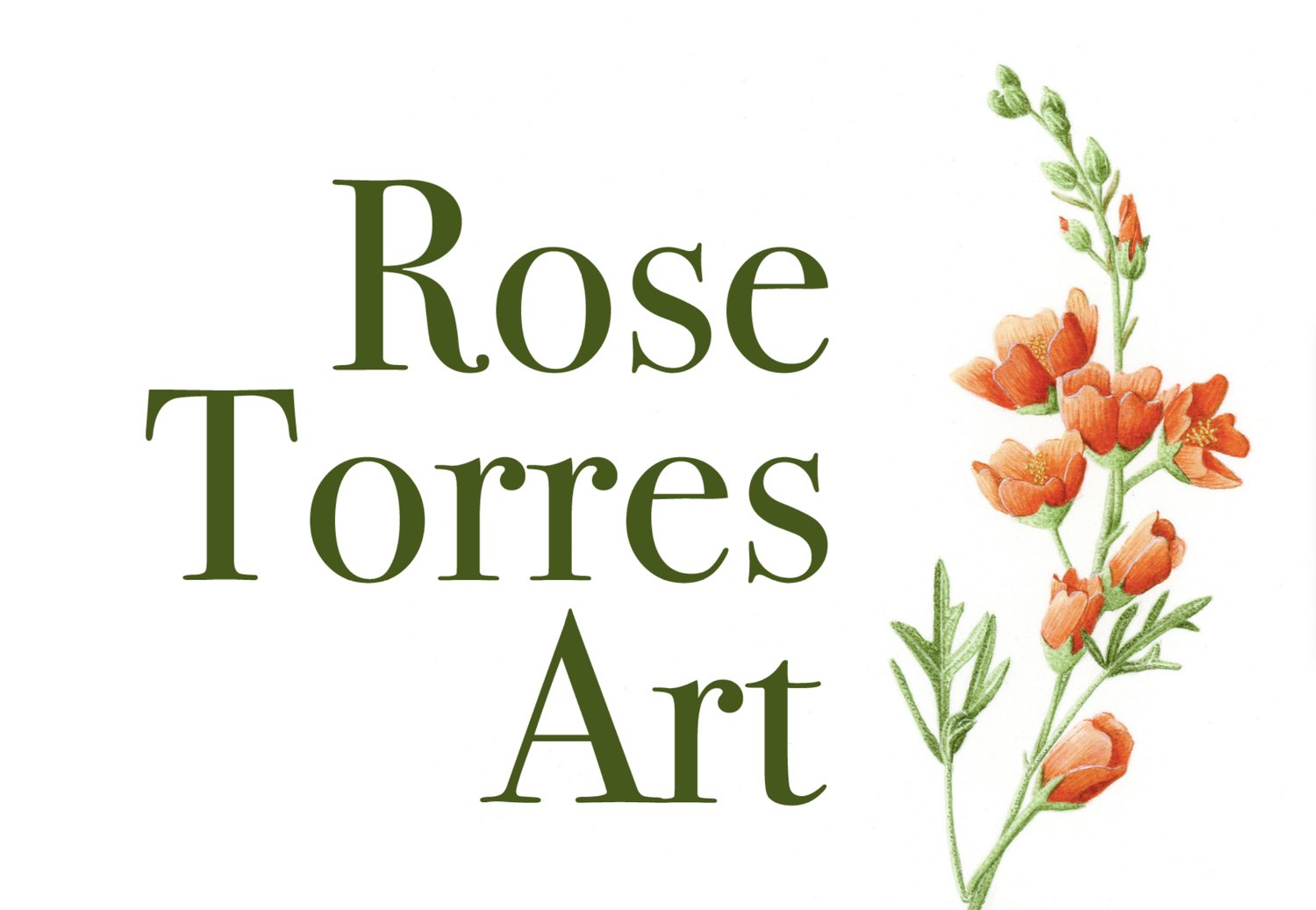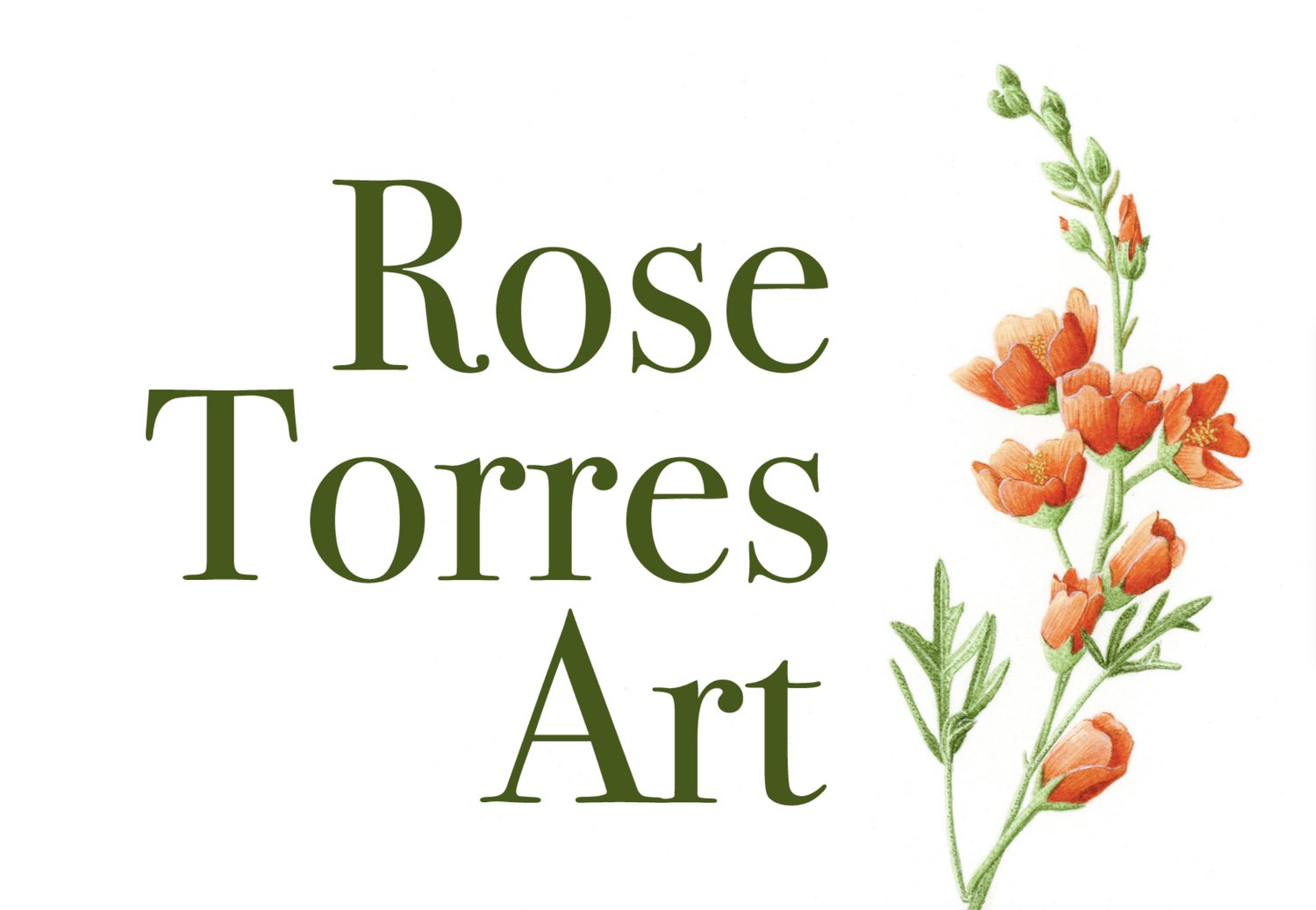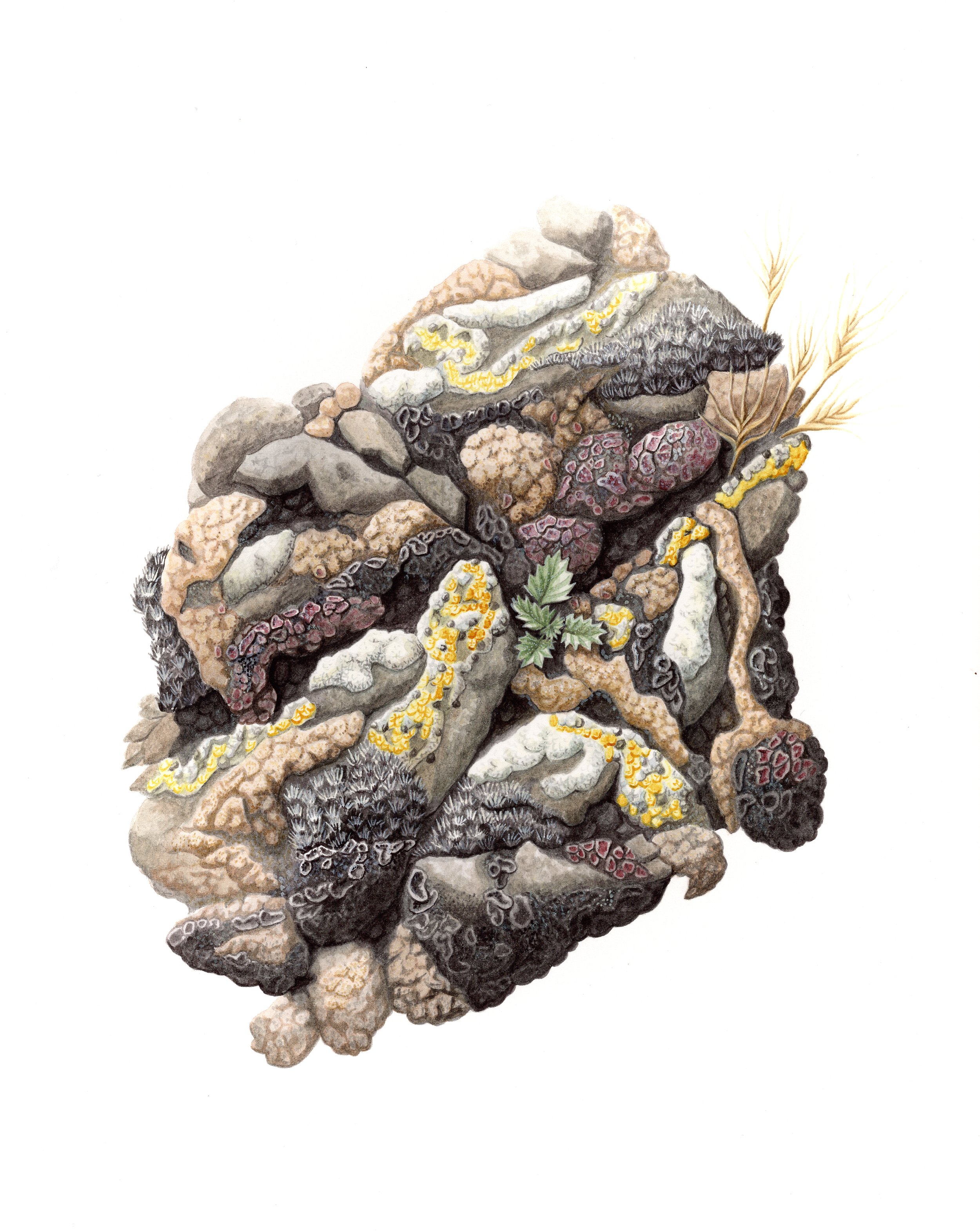Biological Soil Crust
Believed to be:
Jelly Lichen Collema tenax, Blushing Scale Lichen Psora decipiens,
Sulphur Lichen Fulgensia, Star moss Syntrichia ruralis,
Jellytot Earthscale Lichen Placidium squamulosum,
Blue Blister Lichen Toninia sedifolia, Cowpie Lichen Diploschistes muscorum, Tan Lichen Unidentified,
Small Leaf Globemallow Sphaeralcea parvifolia
If you have ever been hiking in an arid desert, you might have seen signs saying “Don’t bust the Crust.” This crust is a delicate, yet vital part of the ecosystem. This tiny, almost alien ecosystem is a protective living layer of Lichens, moss, cyanobacteria connected to the underlying soil. It prevents erosion, stores water, adds nutrients to the soil, provides protection for seedlings, and keeps you from getting a face full of dust and sand. Walking on this crust breaks it apart, and can take decades for it to recover. The Small Leaf Globemallow growing in the deep crevice at the center of the painting is protected by the soil crust. The Soil Crust absorbs water and holds it like a sponge, the deep spaces between clusters prevent seeds from blowing away in the wind, and young seedlings from quickly drying out in the hot dry sunny air.
This gypsum rich biological soil crust was found in St George, Utah. It is the same soil the endangered Dwarf Bear Poppy needs to survive.


